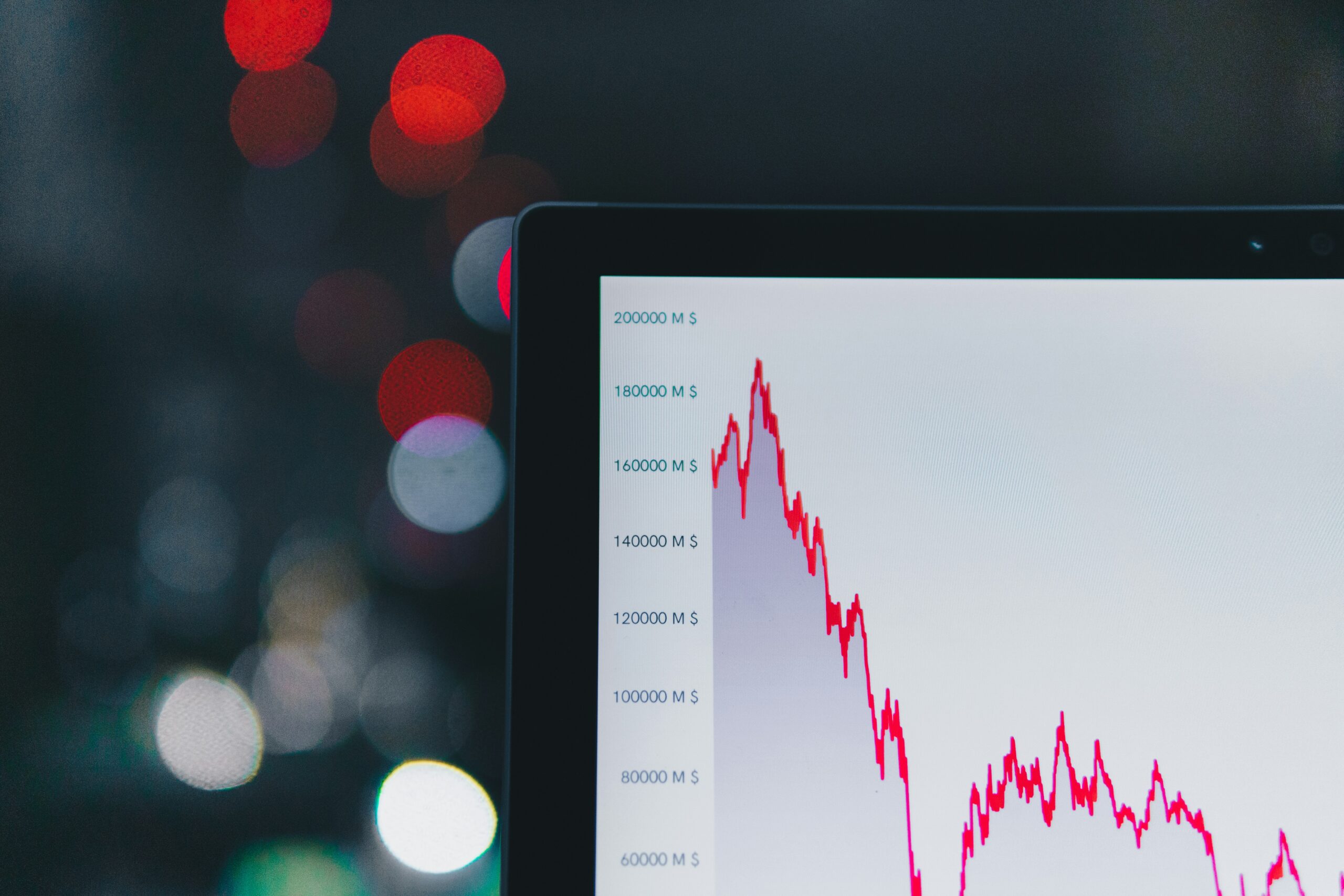Introduction to the Dow Jones Industrial Average
The Dow Jones Industrial Average (DJIA), often simply referred to as the Dow, stands as one of the most renowned stock market indices globally. Established in 1896 by Charles Dow and Edward Jones, the DJIA was conceived to provide a snapshot of the overall health of the U.S. stock market and, by extension, the broader economy. Originally composed of 12 industrial companies, the index has since expanded to include 30 prominent publicly traded companies across various sectors, reflecting a more diversified representation of the market.
The primary purpose of the DJIA is to serve as a barometer for the U.S. stock market’s performance, offering investors and analysts critical insights into market trends and economic conditions. It achieves this by weighing the stock prices of its constituent companies, thus providing a benchmark against which individual stock and portfolio performances can be measured. The index’s movements are often interpreted as indicative of investor sentiment and broader economic activity.
Over the years, the DJIA has evolved, mirroring changes in the global economy and technological advancements. While it initially included companies largely drawn from heavy industries, today’s Dow encompasses a diverse mix of sectors, including technology, healthcare, and consumer goods. This evolution underscores the index’s flexibility and its enduring significance in providing a gauge of economic vitality.
In the financial world, the DJIA’s importance cannot be overstated. It serves not only as a critical reference for investors but also as a vital tool for economists, policymakers, and business leaders. Whether monitoring market trends, making investment decisions, or formulating economic policies, the DJIA is instrumental in shaping financial strategies and understanding market dynamics.
History and Evolution of the DJIA
The Dow Jones Industrial Average (DJIA), commonly known as the Dow, traces its origins back to May 26, 1896. Established by Charles Dow and Edward Jones, the DJIA was designed to serve as a gauge of the United States’ industrial sector. Initially, the index comprised 12 companies, reflecting prominent industrial leaders of the time, such as American Cotton Oil and Chicago Gas.
Over the decades, the Dow has witnessed significant transformations, mirroring the dynamic evolution of the American economy. The original 12 components were eventually expanded to 30 by 1928, a configuration that remains to this day. This expansion aimed to provide a more comprehensive representation of the U.S. industrial landscape, incorporating companies across diverse industries.
The composition of the DJIA has always been subject to periodic reviews and adjustments, ensuring that it remains a relevant and accurate indicator of economic health. These changes usually occur in response to shifts in the economy, industrial innovations, and company performance. For instance, the removal of General Electric in 2018 marked the end of an era, reflective of the changing landscape of American industry. Notably, companies like Apple, Goldman Sachs, and Boeing now represent the modern industrial prowess.
Throughout its history, the DJIA has evolved beyond its original industrial roots to include leaders in various sectors such as technology, healthcare, and finance. This evolution underscores the adaptability and resilience of the American economy. The Dow’s methodology has also seen improvements; initially, it relied on a simple arithmetic average, but now it employs a price-weighted mechanism to account for stock splits and other corporate actions, ensuring an accurate reflection of market trends.
In essence, the history and evolution of the DJIA encapsulate a broader narrative of American economic growth and adaptation, making it not only a benchmark for investors but also a historical record of industrial and economic changes.
How the DJIA is Calculated
The Dow Jones Industrial Average (DJIA) follows a unique calculation method, distinguishable from many other stock indices. It employs a price-weighted indexing system, meaning that the index is influenced more by the price per share of higher-priced stocks than by changes in lower-priced stocks. This methodology is a foundational aspect of the DJIA and sets it apart from market-cap-weighted indices.
The calculation begins with the aggregation of the current share prices of the 30 constituent companies. These companies are selected to represent a wide spectrum of the American economy, covering various industries and sectors. Each stock contributes to the index proportionally according to its price, without accounting for its total market value or the size of the company.
To compute the DJIA, the sum of these 30 prices is divided by the Dow Divisor, an adjusted constant that smooths out the empirical effects of corporate actions. Currently, the Dow Divisor is meticulously maintained to handle the impact of events such as stock splits, dividends, and spinoffs. Stock splits, for example, without this adjustment, would disproportionately affect the index value, artificially inflating or deflating the DJIA. The Divisor ensures that such corporate maneuvers produce no distortion in the overall index.
Moreover, dividends and spinoffs are integral to constituents’ financial actions. When a company issues a dividend, especially a large one, it could theoretically reduce the price per share and thus, affect the index calculation. Likewise, during spinoffs, a portion of the company’s value may transfer to a new entity, necessitating a careful recalibration of the Dow Divisor to safeguard the index’s integrity.
In summary, the DJIA’s calculation is a sophisticated balancing act. It involves price-weighting and diligent adjustments through the Dow Divisor to faithfully represent stock market trends, irrespective of individual corporate changes. This longstanding methodology ensures that the DJIA remains an enduring barometer of the American stock market’s health and performance.
The Companies that Make Up the DJIA
The Dow Jones Industrial Average (DJIA) is composed of 30 distinguished companies known as blue-chip stocks. These companies represent a wide array of industries, reflecting the diverse and dynamic nature of the American economy. The 30 firms span various sectors, including technology, healthcare, consumer goods, and finance. Each company’s stock is meticulously selected based on specific criteria to ensure the DJIA remains a robust indicator of market performance.
Among the notable companies in the DJIA, one finds prominent names such as Apple, a leader in technology, providing innovative consumer electronics and software solutions. Microsoft is another illustrious member, dominating the enterprise software market and cloud computing space. The healthcare sector includes juggernauts like Johnson & Johnson, offering a myriad of pharmaceutical products and medical devices, and Pfizer, renowned for its advancements in biotechnology and vaccination.
In the consumer goods category, Procter & Gamble stands out, producing a wide range of household products, from personal care to cleaning supplies. Coca-Cola and McDonald’s are also pivotal, representing the beverage and fast-food industries respectively, each with a significant global presence.
Financial services and banking are well-represented by institutions like JPMorgan Chase and American Express, which provide a plethora of financial products and services to consumers and corporations. Similarly, Visa is a major player in payments technology, facilitating electronic funds transfers globally.
The inclusion criteria for these companies are meticulous. To qualify for the DJIA, a company must be a leading player in its industry and contribute significantly to the U.S. economy. The selection process is guided by the S&P Dow Jones Indices committee, which periodically reviews and updates the list to reflect the changing economic landscape. This ensures that the DJIA remains representative of the broader market and continues to provide valuable insights into economic trends.
The composition of the DJIA isn’t static; it undergoes periodic reviews to align with market movements and economic shifts. These updates keep the index relevant, ensuring it accurately captures the essence of the current economic climate through its constituent companies.
The Role and Impact of the DJIA in the Economy
The Dow Jones Industrial Average (DJIA) serves as a critical barometer for the overall health of the U.S. stock market and investor sentiment. As one of the most recognized stock market indices globally, the DJIA reflects the performance of 30 significant publicly-owned companies in the United States. When the DJIA trends upward, it usually signals economic growth and investor confidence, whereas a downward movement can indicate market volatility and economic challenges.
Economists and financial analysts closely monitor the DJIA to gauge the economic climate. A rising DJIA often correlates with positive economic indicators such as increased consumer spending and industrial production. Conversely, a declining DJIA can be an early warning sign of economic downturns, prompting businesses and individuals to make more cautious financial decisions.
Investors use the DJIA as a benchmark to compare the performance of their stock portfolios. By analyzing trends within the DJIA, investors can identify broader market movements and adjust their strategies accordingly. For instance, if the DJIA shows a sustained upward trajectory, it might be an opportune time for investors to increase their exposure to equities. On the other hand, a declining DJIA might encourage a shift towards more secure asset classes to mitigate potential losses.
Policymakers also rely on the insights provided by the DJIA to design economic policies. A robust DJIA might support decisions for tightening monetary policies to avoid overheating the economy. In contrast, a falling DJIA might prompt measures such as reducing interest rates or implementing fiscal stimulus to revitalize economic activity.
Ultimately, the DJIA’s role extends beyond simply tracking the stock prices of 30 companies. It acts as a critical tool for understanding the broader economic landscape, providing valuable information that influences the decisions of a wide range of economic participants. Whether it’s guiding investor choices or informing policy approaches, the DJIA holds a vital place in the financial ecosystem.
Comparing the DJIA with Other Indices
The Dow Jones Industrial Average (DJIA) often invites comparisons with other pivotal indices like the S&P 500 and the Nasdaq Composite. Each of these indices serves as a barometer for the stock market, yet they differ significantly in their composition, calculation methods, and the specific market segments they represent.
The DJIA comprises 30 prominent, large-cap companies across various industries, making it a price-weighted index. This means that companies with higher stock prices have a greater influence on the DJIA’s movements, regardless of their market capitalization. One of the hallmark features of the DJIA is its focus on industry-leading firms, which makes it a useful tool for gauging the overall health of the U.S. economy. However, because it includes a smaller number of stocks, it may not fully represent the broader market’s performance.
In contrast, the S&P 500 encompasses 500 of the most prominent publicly traded companies in the U.S., representing a broader spectrum of the market. This index is weighted by market capitalization, meaning companies with larger market values have a more substantial impact on its performance. This method provides a more proportional reflection of economic conditions, as it accounts for the size and total market value of each company. Investors often turn to the S&P 500 for a more comprehensive picture of the market landscape and economic trends.
Meanwhile, the Nasdaq Composite is characterized by its heavy weighting towards technology and biotechnology companies. It includes over 3,000 stocks, making it one of the most extensive indices in terms of coverage. Unlike the DJIA, the Nasdaq Composite is both price-weighted and market-capitalization-weighted, striking a balance between influential price movements and the overall market size of its constituent companies. For investors with a penchant for high-growth, innovation-driven sectors, the Nasdaq Composite becomes an essential index to monitor.
Each of these indices serves a unique purpose, catering to different facets of the market and investor preferences. The DJIA’s focus on industry leaders, the S&P 500’s comprehensive market coverage, and the Nasdaq Composite’s emphasis on technology and growth sectors each offer distinct perspectives and advantages. Investors utilize these indices in varied ways to craft well-rounded investment strategies, enabling them to gain insights into market dynamics and economic health.
Historical Performance of the DJIA
The Dow Jones Industrial Average (DJIA) has a rich and storied history, reflecting the economic ups and downs of the United States over more than a century. Since its inception on May 26, 1896, the DJIA has marked numerous critical milestones that illustrate its dynamic nature. Initially composed of 12 industrial companies, the DJIA aimed to provide a snapshot of the American industrial sector’s health. The index closed at 40.94 points at its debut. Over time, it evolved to include 30 blue-chip stocks, representing a broader spectrum of the U.S. economy.
One of the most significant highs recorded in the history of the DJIA occurred on January 25, 2017, when it surpassed the 20,000 mark for the first time, closing at 20,068.51. This milestone underscored investor confidence during a period of economic growth and stability. Just over a decade earlier, in October 2007, the index had reached another historical high, closing at 14,164.53 points before the Great Recession led to a substantial market contraction.
Conversely, the DJIA has also faced significant lows, most notably during the Great Depression and the 2008 financial crisis. On October 19, 1987, known as Black Monday, the DJIA plunged by approximately 22%, marking one of the most considerable single-day percentage decreases in its history. This event highlighted the volatility and susceptibility of the market to external shocks.
Throughout its history, the DJIA’s performance has been heavily influenced by various world events and economic cycles. For example, World War II initially led to market declines due to uncertainty, but subsequent economic growth during the post-war era saw the DJIA climb significantly. Similarly, technological revolutions, such as the dot-com boom and bust in the late 1990s and early 2000s, have shaped the index’s trajectory.
Charts and data clearly illustrate these trends, revealing how external factors like geopolitical events and economic policies impact the DJIA. Understanding this historical performance is crucial for investors, as it provides context for current trends and future projections, showcasing the resilience and long-term potential of the DJIA despite periods of uncertainty.
Investing in Dow Jones Industrial Average
Investing in the Dow Jones Industrial Average (DJIA) offers a myriad of opportunities for both novice and experienced investors. One primary method is direct investment in DJIA stocks. This involves purchasing shares of individual companies that comprise the DJIA. It’s essential to conduct thorough research and understand each company’s financial health, market position, and growth potential to make informed investments.
Another popular investment strategy is investing in DJIA-focused mutual funds. These mutual funds pool money from multiple investors to buy a diversified portfolio of stocks mirroring the DJIA’s composition. This approach provides professional management of the investments, reducing the research and monitoring burden on individual investors. However, it’s crucial to be mindful of the fees associated with mutual funds, which can impact the overall returns.
Exchange-traded funds (ETFs) offer an alternative investment route for those interested in the DJIA. ETFs are similar to mutual funds in that they replicate the performance of the DJIA but trade like individual stocks on stock exchanges. They typically have lower expense ratios compared to mutual funds, and their flexibility allows investors to buy and sell throughout trading hours. Investing in DJIA ETFs can be a cost-effective way to gain exposure to the overall market performance.
When investing in the DJIA, it is vital to consider the potential benefits and risks. The DJIA consists of 30 large, publicly traded companies, providing a broad representation of the U.S. economy. This diversification can mitigate risks, as the performance of one company is less likely to significantly impact the overall index. However, it’s important to note that past performance is not indicative of future results, and market volatility can affect returns.
Effective portfolio diversification is a hallmark of successful investing. Diversifying investments beyond the DJIA, including assets like bonds, international stocks, and alternative investments, can help spread risk and potentially enhance returns. Additionally, adopting a long-term investing approach can allow investors to weather short-term market fluctuations and capitalize on the growth potential of high-quality DJIA companies over time.
Ultimately, investing in the Dow Jones Industrial Average requires careful consideration of individual investment goals, risk tolerance, and time horizon. Whether through direct investment, mutual funds, or ETFs, understanding the DJIA and its role in a diversified portfolio can be an essential component of a successful investment strategy.



